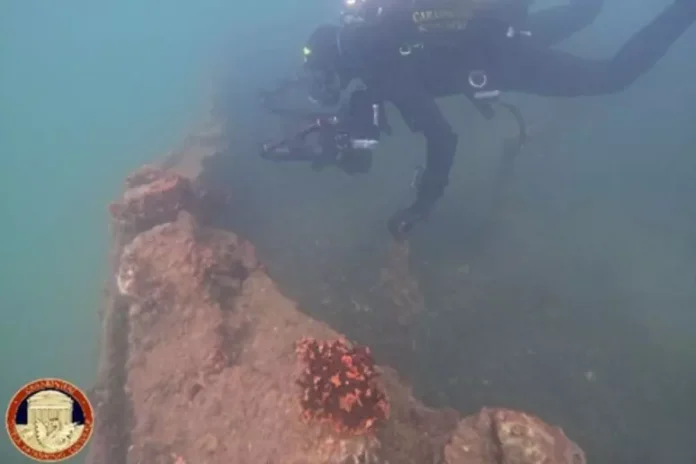by InTrieste
In a remarkable discovery off the coast of the Isonzo River’s natural reserve, local fishermen have unearthed the remains of a World War I-era barge convoy. The convoy, comprising four iron vessels each measuring approximately 20 meters by 6.5 meters, dates back to the early 1900s and remains strikingly aligned in their original formation.
These vessels are believed to be the remnants of barges used for transporting materials, providing logistical support to Italian artillery stationed at the Isonzo’s mouth during the First World War.
According to the Carabinieri’s Cultural Heritage Protection Unit in Udine, the barges were likely scuttled in their current position during the retreat from Caporetto in October 1917. The strategic sinking was intended to prevent them from falling into enemy hands during the chaotic troop withdrawal.
This discovery offers a significant addition to the historical narrative of the Isonzo battles, potentially shedding new light on this pivotal World War I front.
In a related effort, the Carabinieri of Udine, in collaboration with the Superintendency of Friuli Venezia Giulia, the underwater unit of Genoa, and the University of Udine, have also been monitoring another notable find.
A vessel from the 3rd century BC was discovered several years ago, 7 miles off the coast of Grado, Italy, at a depth of 19 meters. Since 2012, a modular metal system has been installed to aid in the preservation of this ancient submerged artifact, protecting it from potential theft and ensuring its continued study and preservation.





























